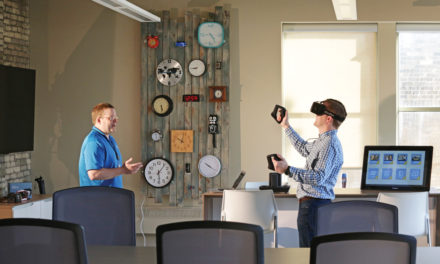In skilled nursing, systems in your buildings are the backbone of care. When HVAC, plumbing, or water safety systems fail, the impact goes far beyond comfort; it can jeopardize survey readiness, compliance, and safety.
That’s why more providers are exploring AI in building operations and automation tools that simplify monitoring, documentation, and preventive maintenance. The growing use of AI is helping teams predict failures before they occur and automate compliance tasks that once took hours.
Artificial intelligence in senior living operations is no longer just theory; it’s showing measurable benefits in long-term care environments.
The role of building operations in survey readiness
Reliable building performance is essential for regulatory compliance and inspections. Building maintenance teams must manage HVAC performance as well as water temperatures and life safety systems, all of which are major focus areas during surveys.
“Consistent compliance isn’t just a regulatory box to check, it’s a key competitive advantage. When your infrastructure and processes proactively ensure compliance, you not only reduce risk but preserve your reputation, pricing power, and long-term occupancy.”
Alongside staffing and food, building operations represent one of the top three expenses in care environments. To control these costs while safeguarding compliance and safety, forward-thinking providers are adopting AI-driven tools that streamline operations and uncover new efficiencies.
The TELS® Platform already helps providers schedule inspections, document work, and centralize compliance reporting, all key to maintaining survey readiness and safety.
How AI supports compliance and safety in SNFs
In skilled nursing, compliance and safety are non-negotiable. A single missed inspection or system failure can trigger citations in addition to disrupting care and jeopardizing trust. AI tools and automation technologies now offer maintenance and facility leaders a smarter way to stay ahead, turning reactive work into proactive protection.
Proactive maintenance powered by predictive analytics
AI tools can analyze equipment data from HVAC systems, boilers, pumps, and refrigeration units to detect subtle changes that often go unnoticed. By identifying at-risk assets before they fail, teams can schedule timely service and avoid emergency calls that strain both budgets and staffing. Predictive insights also extend asset life, helping communities make the most of every capital investment.
“When systems go unchecked, small issues become expensive problems. Smart tech gives you the foresight to act before failure which reduces emergency costs, increases uptime, and protects your margins.”
Compliance-driven automation
Survey readiness depends on consistency, and automation helps ensure nothing slips through the cracks. AI can automatically prioritize safety-critical work orders, flag missed inspections and verify that documentation is complete before surveys. With tools like the TELS® Platform, communities maintain real-time visibility into equipment status and fire protection logs, along with temperature data, helping ensure every system meets regulatory standards year-round.
AI-driven HVAC optimization at Sherbrooke Village delivered a 20–30% reduction in HVAC-related energy use and 15–25% overall utility savings, while improving indoor air quality and compliance with F-Tag 584 standards. This initiative demonstrates how predictive insights and automation can strengthen compliance in addition to comfort and safety; key outcomes every skilled nursing community strives to achieve.
AI-driven asset lifecycle planning
Knowing when to repair versus replace is one of the toughest calls facility leaders face. AI simplifies the decision with data. This empowers leaders to align operational budgets with safety priorities and capital project goals.
Across the country, communities using TELS Platform are seeing a measurable impact, from fewer emergency service calls and reduced survey deficiencies to stronger documentation and improved uptime. The result: stronger compliance and smoother operations that build confidence across your team and protect everyone in your community.
Benefits for staff and residents
The heart of every skilled nursing facility is its people, both those providing care and those receiving it. AI in healthcare operations is built to empower, not to disrupt, that essential connection.
For maintenance and environmental services teams, AI takes on time-intensive monitoring, scheduling, and reporting. With less time spent on manual work, teams can turn their attention to advancing safety and operational excellence. Leaders gain visibility across multiple systems, enabling smarter decisions and fewer surprises.
For residents, these improvements translate directly into comfort and security. Reliable building systems mean stable temperature and safe water quality. They also ensure a calm, consistent environment, all critical to quality of life. Preventive maintenance reduces downtime and eliminates the frustration of repeated disruptions.
Together, these advancements create a powerful ripple effect: a more resilient care environment, lower operational stress, and greater confidence across the entire community. By combining human expertise with intelligent automation, skilled nursing teams are redefining what operational excellence looks like in senior care.
Barriers to adoption
Even with clear benefits, adopting new technology in skilled nursing takes thoughtful planning. Each challenge presents an opportunity to build a stronger, smarter foundation for the future.
Aging infrastructure
Many communities rely on legacy systems that weren’t built for digital integration. Modernizing doesn’t have to mean full-scale replacement. Start with high-impact systems like HVAC or water management. Incremental upgrades create immediate operational wins and pave the way for broader integration.
Data accuracy and readiness
AI is only as strong as the data behind it. Inconsistent or incomplete information limits insights, but the solution lies in consistency. Using the TELS® Platform for preventive maintenance, inspection tracking, and asset management helps standardize data collection, giving AI a reliable foundation for precise, actionable recommendations.
Cultural adoption and team confidence
Building trust in new tools takes time. Involving maintenance leaders, frontline staff, and administrators early helps teams see how automation supports their expertise. Celebrating small wins like fewer emergency calls and faster repairs or stronger documentation builds momentum and confidence. Over time, teams recognize how AI applications amplify their impact, freeing them to focus on what matters most: resident well-being.
The future of AI in skilled nursing facilities
AI in senior care is advancing rapidly, and skilled nursing is uniquely positioned to benefit. Soon, AI-driven automation will unify insights from across the operation. This will connect the physical environment with staffing patterns and resident outcomes to enable faster, more informed decisions.
Emerging innovations like robotic cleaning, automated housekeeping tools, smart disinfection, and integrated HVAC controls are already changing the way communities manage cleanliness and air quality. Tools like TELS® Housekeeping now bring these same advantages to environmental services which help simplify scheduling, track quality, and ensure every room meets consistent standards across shifts. These technologies lighten staff workload while strengthening compliance and resident safety.
At Direct Supply, we’re focused on bridging innovation with practicality, delivering AI solutions and survey-ready tools that help care teams stay compliant and future-focused. The goal is clear: enable safer environments, stronger operations, and better outcomes for every resident.
The bottom line
With fewer emergencies and stronger compliance outcomes, the benefits of AI in senior care operations are becoming increasingly clear. Skilled nursing communities adopting AI-driven building management today are setting the stage for a future of greater safety and operational resilience.
As innovation continues to advance, leaders who explore these tools now will be best positioned to improve outcomes, extend asset life, and deliver exceptional care environments.




